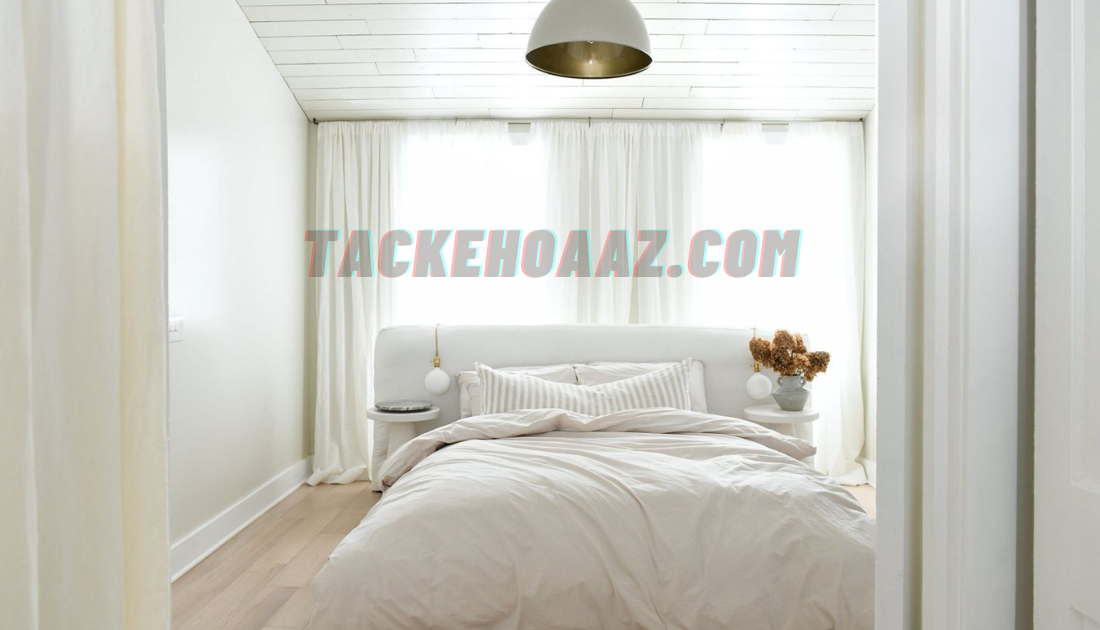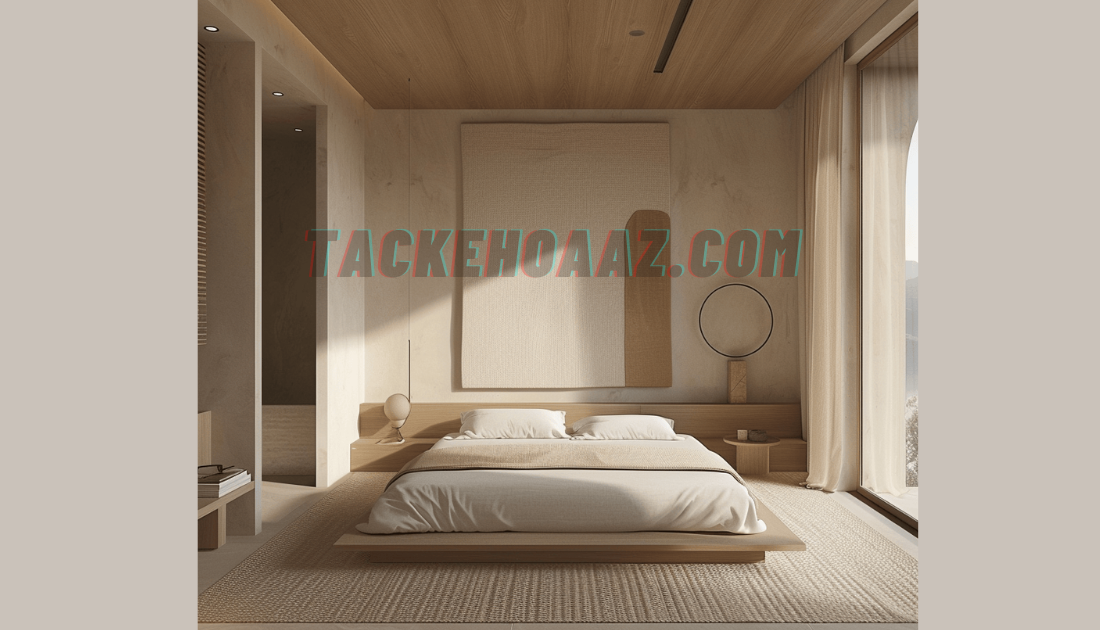Minimalist design is a style that focuses on simplicity, functionality, and creating a sense of peace in any space. With clean lines, neutral colors, and a focus on essential elements, minimalist design transforms a room into an open, calming retreat. Whether you’re looking to refresh your home or adopt a simpler lifestyle, minimalist design can bring clarity and balance to your environment. In this guide, we’ll explore the principles of minimalist design, its benefits, and practical tips for bringing it into your space.
1. What is Minimalist Design?
Minimalist design centers on the idea that “less is more.” It emphasizes essential elements and removes distractions, creating a clean, uncluttered space. This approach is about focusing on functionality, beauty, and quality rather than filling a space with unnecessary items.
- Simple and Clean Lines: Minimalist design avoids ornate details, using clean lines and smooth surfaces to create a sleek look.
- Focus on Functionality: Each item in the space serves a purpose, blending aesthetics with practicality.
- Neutral Color Palette: Minimalist spaces often feature neutral colors, such as white, beige, and gray, which provide a calming backdrop.
2. Benefits of Minimalist Design
Minimalist design offers various benefits that go beyond just appearance. Here’s why it’s a great style choice:
- Creates a Calming Environment: Minimalist spaces reduce visual clutter, which can relieve stress and promote a sense of calm.
- Encourages Organization: By focusing on only essential items, minimalist design promotes tidiness and organization.
- Timeless Appeal: Because it emphasizes quality over quantity, minimalist design remains stylish and relevant over time.
- Reduces Cleaning and Maintenance: Fewer items mean less to clean and maintain, which can make daily life easier.
3. Key Elements of Minimalist Design
To achieve a true minimalist look, it’s essential to incorporate these elements:
Neutral Color Palette
A neutral color palette is a hallmark of minimalist design. Soft shades like white, beige, and gray open up a room and create a fresh, airy feel.
- Use White as a Base: White walls provide a clean canvas and make a room feel larger and brighter.
- Add Subtle Contrast: Incorporate shades of gray or beige to add warmth and prevent the space from feeling too cold.
- Limit Bold Colors: Minimalist design typically avoids bright colors, but small accents can be added for interest.
Functional Furniture
Furniture in minimalist spaces should have simple forms and serve a practical purpose. Clean lines and neutral colors work well to create a cohesive look.
- Choose Simple Pieces: Opt for furniture with clean lines and minimal detailing, like a straight-backed sofa or a low-profile bed.
- Invest in Multi-Functional Items: Furniture that serves more than one purpose, like a storage ottoman or a fold-out table, is ideal for minimalist spaces.
- Select Quality Materials: Minimalist design favors quality over quantity, so choose durable materials like wood, metal, or glass.
Decluttered Surfaces
Keeping surfaces clutter-free is key in minimalist design. Instead of filling every space with decor, focus on a few meaningful items.
- Limit Decorative Items: Choose one or two key pieces, like a simple vase or a framed artwork, to add personality without overwhelming the space.
- Use Hidden Storage: Cabinets, drawers, and storage boxes help keep smaller items out of sight and maintain a tidy appearance.
- Keep Wall Art Minimal: Limit wall decor to a single large piece or a small collection to maintain a clean look.
4. Tips for Incorporating Minimalist Design in Your Home
If you’re interested in transforming your home with minimalist design, here are some practical steps to get started:
Start with Decluttering
Decluttering is the first step in creating a minimalist space. Go through your belongings and remove items that are not essential or meaningful.
- Sort and Donate: Go through each room and donate or sell items that you no longer need. This frees up space and simplifies your surroundings.
- Keep Only Essentials: Focus on items that serve a purpose or add value to your life.
- Organize Hidden Storage: Use drawers, cabinets, and closets to keep everyday items out of sight, creating a more open and spacious feel.
Focus on Quality Over Quantity
Minimalist design values quality over quantity. Invest in a few well-made items rather than filling the space with disposable decor.
- Choose Timeless Furniture: Select pieces that will last, such as a sturdy wooden dining table or a comfortable sofa.
- Use Multi-Functional Items: Look for furniture that can serve multiple purposes, like a bed with built-in storage.
- Avoid Trendy Decor: Stick to classic pieces that won’t go out of style, ensuring that your space feels timeless.
Incorporate Natural Materials
Natural materials like wood, stone, and plants bring warmth and texture to a minimalist space without cluttering it.
- Add Wooden Accents: Wood furniture or flooring creates an organic feel that balances the sleekness of minimalist design.
- Include Greenery: Simple indoor plants, like succulents or snake plants, add color and freshness.
- Use Stone or Ceramic: Stone countertops or ceramic vases add subtle texture and depth, enhancing the simplicity of the space.
5. Minimalist Design for Different Rooms
Minimalist design can be applied throughout your home. Here’s how to bring it into specific spaces:
Living Room
A minimalist living room should feel open and inviting. Focus on essential furniture and avoid clutter.
- Limit Furniture: Stick to a sofa, a coffee table, and one or two accent chairs. Avoid unnecessary pieces like extra side tables or shelves.
- Add One Statement Piece: A unique coffee table or a single piece of art can add personality without cluttering the room.
- Use Simple Lighting: Choose a sleek floor lamp or pendant light to keep the design clean and uncluttered.
Bedroom
In a minimalist bedroom, simplicity is key. The focus should be on creating a calm, restful environment.
- Choose a Low-Profile Bed: A low bed frame with clean lines gives the room a modern, minimalist feel.
- Limit Accessories: Stick to a few essentials like a bedside table and a lamp. Avoid excessive pillows or decor.
- Keep the Color Scheme Soft: Use soft, neutral colors for bedding and curtains to create a relaxing atmosphere.
Kitchen
A minimalist kitchen should be functional and uncluttered, with a focus on practical storage solutions.
- Opt for Closed Cabinets: Closed cabinets keep cookware and dishes out of sight, maintaining a clean look.
- Limit Countertop Items: Only essential items, like a coffee maker or a cutting board, should be on the counter.
- Use Simple Hardware: Choose sleek, simple handles or knobs for cabinets to enhance the minimalist aesthetic.
6. Real-Life Benefits of Minimalist Design
Beyond aesthetics, minimalist design has practical benefits that improve everyday life:
- Reduces Stress: A clean, uncluttered space can reduce stress, making it easier to relax and focus.
- Increases Productivity: Minimalist spaces eliminate distractions, allowing you to concentrate better on tasks at hand.
- Encourages a Mindful Lifestyle: By focusing on essentials, minimalist design encourages a mindful approach to what you bring into your home.
Conclusion
Minimalist design is more than a decor trend; it’s a way to bring simplicity, elegance, and functionality into your life. By embracing a neutral color palette, focusing on quality, and eliminating clutter, you can create a space that feels open, calming, and purposeful. From the living room to the kitchen, minimalist design transforms each area into a peaceful retreat.
In conclusion, if you’re seeking a balanced and stylish space, minimalist design offers the ideal solution. Start by decluttering, choosing quality pieces, and focusing on essentials to turn your home into a harmonious and beautiful environment.

